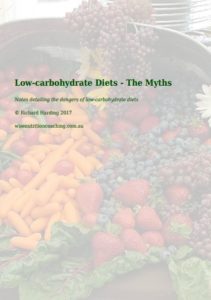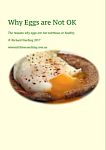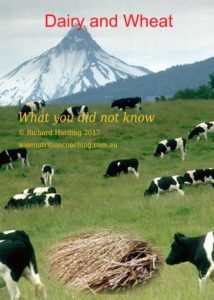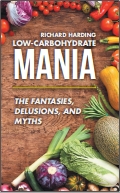2040 Documentary
2040 – The Documentary
2040 is a documentary by Damon Gameau that targets a young audience to convince them that they can make a difference to planet Earth’s well-being using technology that we already have at our disposal.
The key areas addressed in the documentary are:
- Transport: Reducing our reliance on private car ownership and with the advent of self-driving cars will allow much valuable land that is allocated to roads and parking to be much better utilised.
- Electricity production: Small scale electricity production by individual houses that networks communities, enabling the distribution and sharing of electrical power.
- Agriculture: Improving soil structure by retaining organic matter greatly increases the productivity of the land.
- Marine permaculture with the intensive growing of kelp: Kelp grows as cool-water forests in shallow water. Some species can grow ½ a metre per day and reach a height of 30-80 metres. Kelp communities support a large number of animals. It can be used as food for people, animals and fish, a source of iodine, crop fertiliser and a source of methane for fuel.
- Education with a focus on girls: Education, particularly for girls is a great benefit for the individuals and their communities.
In slightly more than 20 years, by the year 2040, sufficient change has occurred to save the Earth from environmental disaster which appears inevitable.
Solutions proposed by 2040 that individuals can implement.
- Reduction of food wastes: 30-40% of the food produced in the US goes uneaten. Food wastes that end up in landfill is a significant contributor of methane which is a green house gas. “Although food waste is a huge environmental issue, it’s something we can all address.”
- Eat less meat: Reduce the amount of meat consumed from the average of 110 g per day to 55 g per day.
- Choose chook over beef: “Chicken is far better for the planet than beef. In terms of emissions, it’s about three-to four kilos of carbon per kilo produced while beef is 33 kg. So there’s a huge difference there.”
- Know where your meat originates: “The emissions from the type of meat that comes from industrial farms is astronomical compared to meat farmed through regenerative practices.”
- Choose seeds, nuts, fruit and vegetables wisely: “Avoid or limit their intake of mono-cropping grains and cereals like corn, soybeans and wheat.”
- Grow own food: According to 2040, growing your own food is one of the best things you can do for the planet. Owning a garden means you can choose which foods to plant and eat. The documentary suggests that the best home crops for storing carbon in the soil are warrigal greens, Queensland arrowroot, garlic chives and Greek basil.
- Eat ingredients from bulk-food stores: “Herbs spices flour, nuts, seeds and legumes sold at bulk-food stores do not use any packaging. Shoppers are encouraged to bring their own re-purposed jars and containers. Or, you can use re-usable paper bags that may be supplied by the shop.”
Livestock’s Long Shadow
Dr Henning Steinfeld is an agricultural economist working at the UN as the head of the livestock analysis and policy section. In 2005, he was the lead author of a 400 page UN report Livestock’s Long Shadow. 1
It stated that the biggest contributor to environmental damage was livestock agriculture. Livestock agriculture includes poultry – both meat and egg production. It is a bigger contributor than transport. The information below is sourced from the document which is available for all to read.
Atmospheric Damage
Animal agriculture is responsible for 18 percent of the world’s greenhouse gas emissions which includes CO2, methane and ammonia.
Land Damage
Livestock grazing accounts for 26% of the available surface of the planet. Area dedicated to producing feed crops for these animals amounts to 33 percent of the total arable land.
Clearing forests to create new pastures is a major source of deforestation. 70% of former rainforests in the Amazon have been turned over to grazing.
Water Damage
The livestock is the most serious users of the earth’s scarce water resources which disturbs water cycles. Significant amounts of water are withdrawn for the production of feed.
Species Loss
Livestock is also an important contributor to biodiversity loss.
An important contribution of livestock’s over-exploitation consists in the production of fish-meal for livestock feed. 7 of the 10 most fished species, accounting for 30 percent of the world total marine capture fisheries production, are either fully exploited or over-exploited – not sustainable. 2
Nitrogen and phosphorous from agriculture into waterways and oceans is still increasing with mangrove forests, coral reefs and sea grass beds being severely affected. Sea grass beds are very important nurseries for many species including fish, turtles and large mammals (dugong, manatee). Sea grasses environments are under threat in the Caribbean, Gulf of Mexico, the Mediterranean, both sides of the Northern Pacific, large areas of the Indo-Pacific region and extensive areas of Northern Australia.
Over-exploitation of Ocean’s Resources
80% of the world’s fish stocks are fully exploited or over-exploited. 3
In 2006, 36% of the total world fisheries catch was destined for non-food use. It was used for fish meal and fish oil for animal foods. 4
These small pelagic (open ocean), low-value fish form the bulk of fisheries catch destined for non-food uses with the aquaculture sector being the largest consumer utilising 26% of the total catch. These are often taken as a by-catch of fishing operations and varies depending upon location and season. Most of these small pelagic fish (73%) are anchovies, sardines, herrings, pilchards and related fish. Several species are either fully-exploited or over-exploited. 4
Fishing Subsidies
Fishing subsidies greatly distort the fisheries market. In 2009, 5
- Global fisheries subsidies were estimated to be US$35 billion. The total revenue from the industry is US$90 billion.
- Harmful subsidies constituted US$20 billion consisting of fuel subsidies, management, port and harbour tax relief and equipment modernisation.
- US$11 billion is spent on beneficial subsidies such as research with the remaining having unknown impact.
US$ 35.4 billion of global fishing subsidies were provided in 2018. 64% (group C) were benedicial to the fishing industry in that it allowed a greater catch of the dwindling resource, whilst 30% (group B) were beneficial and 10% (group A) were ambiguous. 6

The 2040 documentary shows black and white Holstein-Friesian cattle contentedly grazing. The next step, where that cattle are headed for the abattoir, is avoided. Apart from the unnecessary suffering, there is a substantial increase in the transport costs, utilisation of water and the disposal of waste products.
World-wide, this was the fate of billions of animals in 2016.
- Chickens: 16 billion
- Pigs: 1.5 billion
- Sheep: 550 million
- Goats: 450 million
- Cattle: 300 million
Most of the grains grown in Australia is produced for export and for the feeding of livestock. 7

Why grow wheat, corn and soy to feed cows, then kill the cow and eat the meat when it is much more efficient to eat the corn?
Below is a graph showing the consumption of water in producing our food. 8
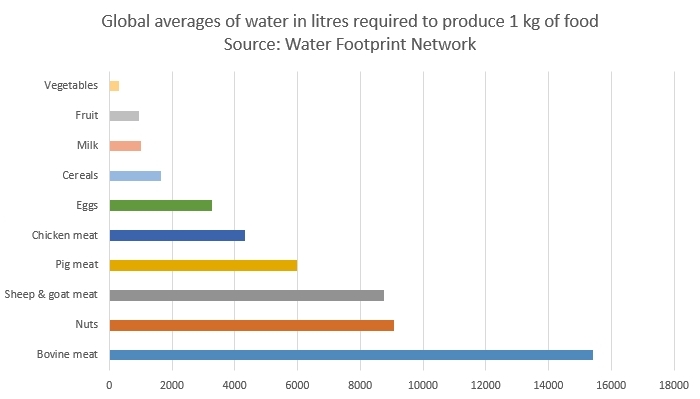
Health Benefits of Plant-based Diets
A Taiwanese Buddhist study with 4,384 participants compared type 2 diabetes outcomes for vegetarians (vegans and lacto-ovo-vegetarians) compared with those who ate fish and meat. The meat-eating group ate only a very small amount of meat. 9
- Meat intake for females: 50% consumed less than 10 g/day; 25% consumed less than 2 g/day.
- Meat intake for males: 50% consumed less than 20 g/day; 25% consumed less than 7 g/day.
- Fish and meat intake for females: 50% consumed less than 17 g/day; 25% consumed less than 3 g/day.
- Fish and meat intake for males: 50% consumed less than 37 g/day; 25% consumed less than 11 g/day.
Three garden peas weigh a gram. One Big Mac, with 2 meat patties, contains 90 g of meat—so the participants were consuming only a very small amount of meat.
That minute amount of meat increased the risk of diabetes 4 times for females and 2 times for males.A strong commitment to health has been a part of Adventist’s tradition since its founding in the 1840s.
The comparison of the types of diet (in the AHS-2 study) showed a significant difference in both the body weight and the incidence of Type 2 Diabetes. 10
| Category | % | BMI | Type 2 diabetes Odds ratio (*) |
|---|---|---|---|
| Vegan No red meat, fish, poultry, dairy, eggs | 4.2 | 23.6 | 0.32 |
| Lacto-ovo vegetarians Vegan with eggs and milk | 31.6 | 25.7 | 0.43 |
| Pesco-vegetarians Vegan with fish, milk and eggs | 11.4 | 26.3 | 0.56 |
| Semi-vegetarians Red meat, poultry less than once a week plus fish, milk, and eggs | 6.1 | 27.3 | 0.69 |
| Non-vegetarians Red meat, poultry more than once a week plus fish, milk, and eggs | 46.9 | 28.8 | 1 |
(*) After adjustment for age, sex, ethnicity, education, income, physical activity, television watching, sleep habits and alcohol use.
Much publicity is given to the longevity of the people of Japan and Okinawa (an archipelago that stretches from southern Japan to Taiwan).
However, the population with the longest lifespan and the highest levels of health on the planet is the vegan Californian Seventh-day Adventists. Californian Adventists have a higher lifer expectancy at the age of 30 years than other white Californians by 7.28 years in men and 4.42 years in women, giving them perhaps the highest life expectancy of any formally described population. 11
Note that Californians are much healthier than the average American being in the top five states for longevity with an average life expectancy of 5-6 years greater than the Mississippi states.
The solutions proposed in 2040 are an encouraging step towards a viable and sustainable future. Much, much more needs to be done with a greater sense of urgency than is shown in the movie. Billions of dollars is spent annually to ensure that industries, corporations and governments remain unaffected and unchanged despite increasing evidence and pressure that we need to run full tilt towards a sustainable future.
A truly sustainable agriculture is best not only for our environment, but our health and the animals that we share the earth with.Last updated on Saturday 17 August 2024 at 19:48 by administrators
Footnotes
- Steinfeld, H. et al. (2006) Livestock’s long shadow. FAO, Rome. 2006.
- Peruvian anchoveta, Alaska pollack, skipjack tuna, Atlantic herring, blue whiting, chub mackerel, Chilean jack mackerel, Japanese anchovy, large head hairtail and yellowfin tuna
- United Nations. (2010, May). General facts regarding world fisheries.
- Tacon, A. G. J. & Metian, M. (2009) Fishing for Aquaculture: Non-Food Use of Small Pelagic Forage Fish—A Global Perspective. Reviews in Fisheries Science. 17 (3), 305–317.
- Sumaila, U. R. et al. (2016) Global fisheries subsidies: An updated estimate. Marine Policy. 69189–193.
- Schuhbauer, A. et al. (2020) The global fisheries subsidies divide between small-and large-scale fisheries. Frontiers in Marine Science. 7 (1), 792
- Spragg, J. (2016) Australian Feed Supply and Demand Report 2016
- Mekonnen, M. M. & Hoekstra, A. Y. (2010) The Green, Blue and Grey Water Footprint of Farm Animals and Animal Products. p.50.
- Chiu, T. H. T. et al. (2014) Taiwanese Vegetarians and Omnivores: Dietary Composition, Prevalence of Diabetes and IFG Marià Alemany (ed.). PLoS ONE. 9 (2), e88547.
- Tonstad, S. et al. (2009) Type of vegetarian diet, body weight, and prevalence of type 2 diabetes. Diabetes Care. 32 (5), 791–796.
- Fraser, G. E. & Shavlik, D. J. (2001) Ten Years of Life - Is It a Matter of Choice? Archives of Internal Medicine. 161 (13), 1645–1652.
